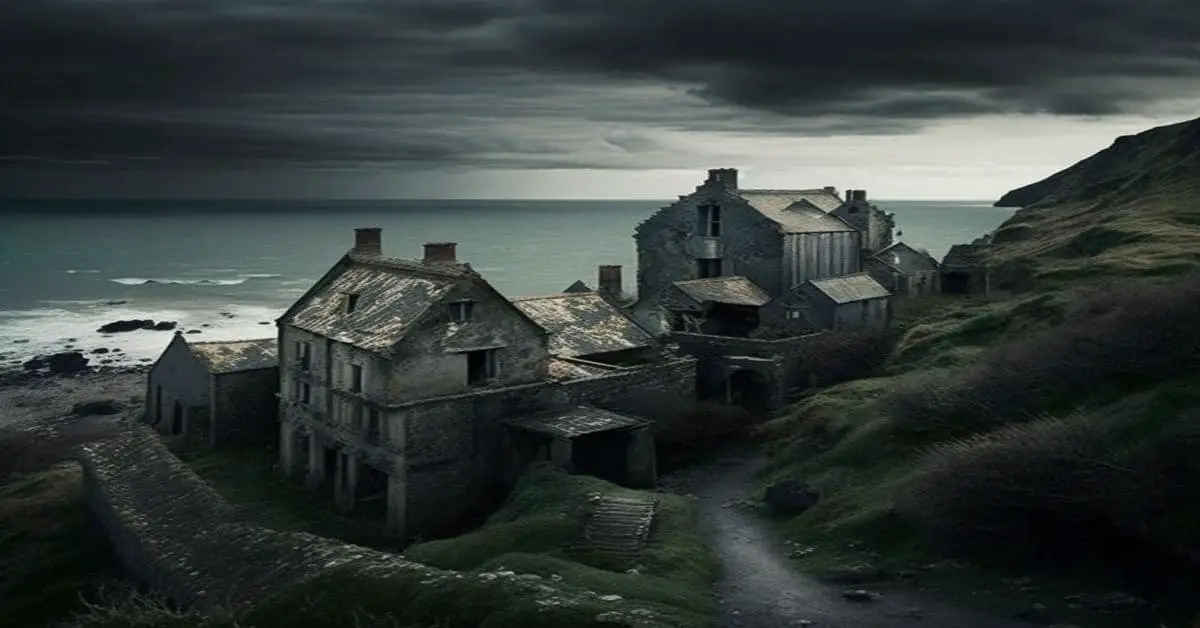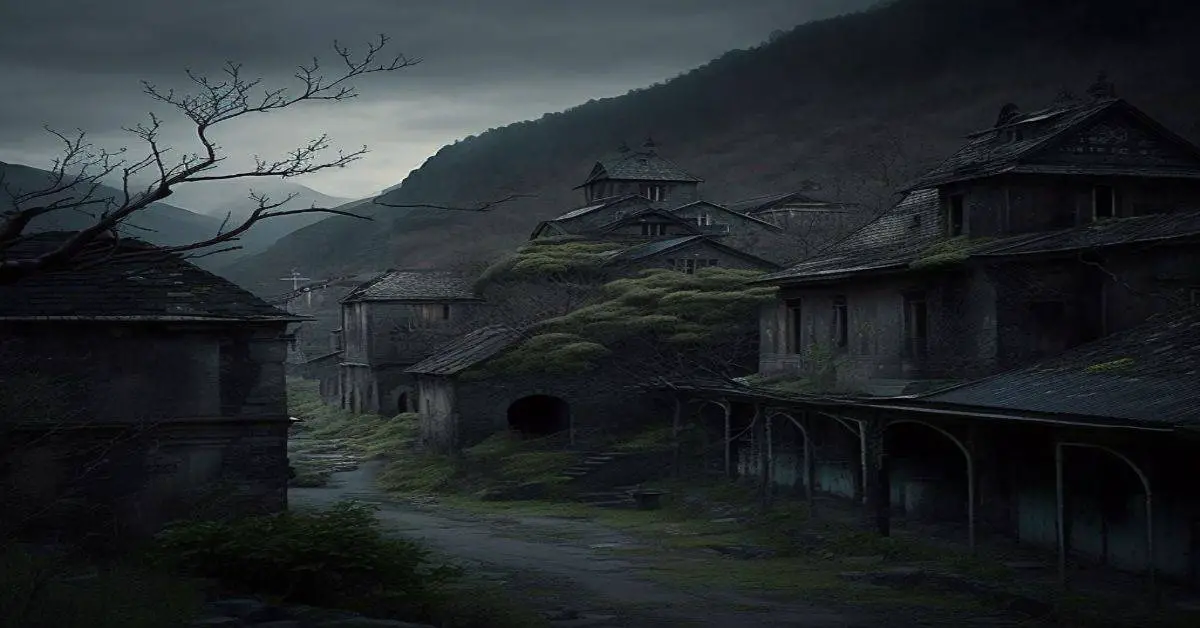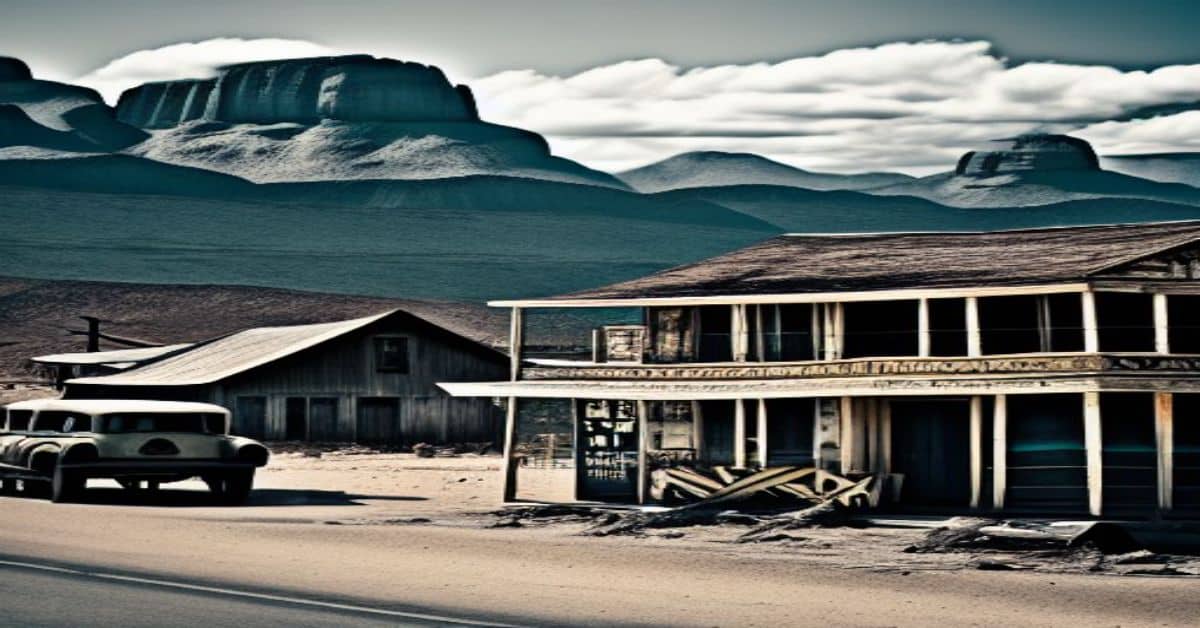Nestled in the rugged landscape of North Glenwood, New Mexico, lies the abandoned town of Mogollon. Once a thriving mining camp, Mogollon gained a reputation for its innovative mining methods and bustling population of 2,000 in 1909. The town’s success was largely due to the Little Fanny mine, which boasted a monthly payroll of $50,000 to $75,000 in 1915.
However, as the assay value of the ore began to decline, the mine ultimately closed down, leading to the town’s demise. Today, Mogollon stands as a ghost town, with many of its original buildings still standing, offering a glimpse into this once-thriving town’s rich history and haunting legacy.
Despite its abandonment and decline, Mogollon’s legacy remains valuable to New Mexico’s history. Its innovative mining methods and bustling economy were a testament to the town’s resilience and resourcefulness in the face of adversity.
However, Mogollon’s history is not without its dark side, as miner’s consumption was a severe and often fatal health concern. The health concerns of the miners serve as a reminder of the dangerous conditions that miners faced to extract the valuable minerals that fueled the town’s economy.
Discovering Mogollon offers a unique glimpse into the past, highlighting the triumphs and tragedies of this once-thriving mining town and its people.
Key Takeaways
- Mogollon was once a thriving mining camp with a population of 2,000 in 1909 and an innovative mine called the Little Fanny Mine that produced a payroll of $50,000 to $75,000 per month in 1915.
- The decline of the town and mine was caused by the assay value of the ore decreasing, which led to the closure of the mine and subsequently the town.
- The legacy of Mogollon is its many original buildings that still stand and offer a unique glimpse into the past, as well as highlighting the triumphs and tragedies of the town and its people.
- The health concerns of mining, such as miner’s consumption and respiratory problems, were exacerbated by the dusty mining environment and limited medical treatment, and the environmental impact of mining contaminated the soil and water.
History and Mining Industry
The history of Mogollon is closely tied to the mining industry, with the town’s establishment in the 1890s as a mining camp and the success of Little Fanny mine contributing to its growth and prosperity.
Little Fanny gained a reputation in the town’s history as its owners developed innovative techniques to reduce dust by spraying water.
The mine’s payroll in 1915 was between $50,000 and $75,000 per month, and gold and silver bullion were shipped to Silver City by mule team. However, the assay value of the ore began to drop over time, and trucks took over hauling the ore during World War I.
The decline in ore quality led to Little Fanny’s closure, ultimately leading to the closure of Mogollon.
Despite its closure, Mogollon’s history and legacy live on through its many original buildings.
However, the mining industry also left behind some health concerns.
Miner’s consumption was severe and often fatal, causing respiratory problems exacerbated by the dusty mining environment.
Nonetheless, the innovative techniques developed by the owners of Little Fanny mine to reduce dust show the ingenuity and resourcefulness of the people who lived and worked in Mogollon during its heyday.
Population and Economy
With a population of approximately 2,000 in 1909, Mogollon boasted a thriving mining industry, with Little Fanny mine alone contributing a payroll of between $50,000 and $75,000 per month in 1915.
However, over time the assay value of the ore began to drop, leading to the closure of Little Fanny and subsequently Mogollon as a whole.
Today, the town remains as a historic ghost town, with many original buildings still standing.
Despite its closure, Mogollon still holds potential for tourism due to its rich history and well-preserved buildings.
The town’s isolation and rugged terrain add to its mystique, making it an attractive destination for those interested in the Wild West.
However, any potential modern development would have to be approached carefully, so as not to disturb the town’s historical integrity.
Health Concerns
One of the major health concerns in Mogollon was miner’s consumption, a severe and often fatal lung disease that affected those who worked in the town’s mines. This occupational hazard was caused by prolonged exposure to dust and other airborne particles, which damaged the lungs and caused respiratory illnesses. Despite the known risks, little was done to protect the miners from these environmental hazards.
Medical treatment was limited and often ineffective, and public health measures were non-existent. The environmental impact of mining in Mogollon also had long-lasting effects on the health of its residents. Toxic chemicals and waste products from the mining process contaminated the soil and water, leading to other health problems such as skin rashes and gastrointestinal issues.
Even after the mines were closed, the health risks persisted, and the town’s population continued to suffer from the legacy of mining in the area. Today, the remains of Mogollon serve as a reminder of the human cost of industrialization and the importance of protecting workers and the environment from the harmful effects of industrial activities.
Frequently Asked Questions
What is the current state of preservation of the original buildings in Mogollon?
Preservation efforts have been made to maintain the original buildings in Mogollon, a ghost town in New Mexico with historical significance. The buildings serve as reminders of the mining camp’s past, despite the severe health concerns that plagued its inhabitants.
Were any notable individuals or families living in Mogollon during its heyday?
While Mogollon’s history is rich, its notable residents are few. However, the community’s contributions to New Mexico’s mining industry were significant. Little Fanny mine’s owners pioneered dust suppression techniques, aiding miners’ health.
During its peak years, Mogollon’s social and cultural life revolved around mining-related activities. However, cultural practices and entertainment options existed, including dances, baseball games, and community events. The town also had a school, post office, and a few churches.
How did the closure of Mogollon affect the surrounding communities?
The closure of Mogollon had a significant economic impact on the surrounding communities, as the mines’ closure led to a loss of jobs and income. The community response was mixed, with some relocating and others staying to maintain the town’s historic buildings.
Are there any plans for developing or using the Mogollon site?
Future plans for the Mogollon site remain unclear, with no official development or use proposals. However, the town’s historical significance and well-preserved buildings present potential for tourism opportunities in the area.


